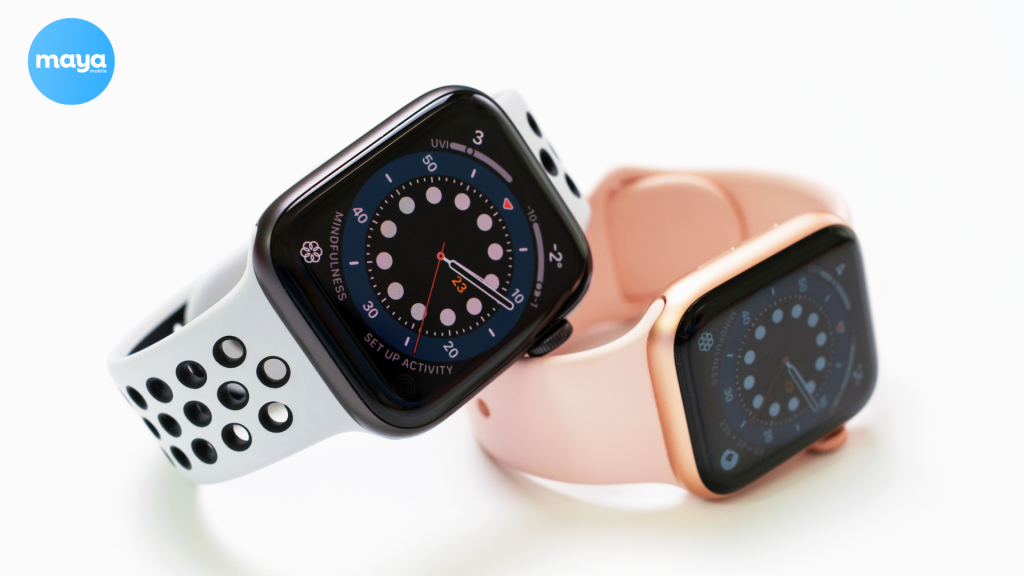You’ve probably noticed it, sometimes your physical SIM feels more reliable. Other times, your eSIM holds steady when the traditional one drops out. The question’s simple: Does SIM type actually impact signal strength?
After testing across devices, networks, and locations, here’s the short answer: it’s more nuanced than most people think. Signal strength doesn’t just come down to “eSIM vs physical SIM.” It’s tied to how the device is built, how networks provision profiles, and even how firmware handles connectivity.
This post breaks down what influences signal strength between eSIMs and physical SIMs.
How Mobile Signal Strength Is Measured
Before comparing SIM types, it’s important to understand how signal strength is measured. Most phones report signal in dBm (decibel-milliwatts), where a number closer to zero means a stronger signal. For example, -60 dBm is better than -100 dBm.
Networks may also use terms like RSRP (Reference Signal Received Power) and RSSI (Received Signal Strength Indicator), which help measure signal quality in different ways depending on the technology in use.
The key factors that influence signal strength are:
- The quality of the modem and antennas in the device
- Distance from the nearest cell tower
- Network congestion and local interference
- Physical obstacles like walls, buildings, or terrain
The SIM format, whether physical or embedded, does not affect these measurements. It simply stores the credentials needed to connect.
Architecture and Signal: Why eSIM Integration Supports Strong Connectivity
Physical SIM cards and eSIMs connect to the same mobile network in the same way, but their placement inside the device is different. This affects the internal layout of components, not how the device transmits or receives signals.
Simplified Internal Routing with eSIM
Physical SIMs require a tray, connector pins, and dedicated routing across the mainboard. eSIM eliminates all of this.
It’s a compact chip soldered directly onto the PCB, positioned close to the modem and critical components. This integration reduces complexity in the signal path and frees up internal space, which manufacturers use to enhance antenna placement or increase battery size. ‘
With fewer mechanical components, the risk of signal loss due to hardware wear or connector corrosion is also eliminated.
Optimized Design in Modern Devices
eSIM’s compact footprint enables more efficient internal layouts. In smartphones and wearables, where internal real estate is limited, this allows better component isolation and optimized antenna tuning.
Devices like the iPhone 14, Pixel 7, and Galaxy S24 are designed from the ground up with eSIM-first architecture, ensuring peak performance without compromise.
Teardown analyses of recent flagships show that eSIM models maintain equivalent or improved RF stability compared to their physical SIM counterparts. Antenna layout, thermal efficiency, and shielding benefit from the space and design flexibility eSIM provides.
Stronger Suitability for Next-Gen Devices
In ultra-thin phones, foldables, and wearables, eSIM plays a critical role in maintaining signal integrity while keeping the form factor compact. By eliminating physical slots, manufacturers can create sealed, water-resistant designs with optimized radio behavior.
The result is consistent performance even in edge-case environments like low-signal zones or during handover between towers.
Also Read: Travel Smart: How eSIM Transforms Data Roaming
Platform-Level Signal Management
Apple Devices
Apple’s eSIM integration is deeply tied to iOS and the hardware modem. iPhones from XS onward are built to manage profile switching, signal reacquisition, and roaming access efficiently. iOS supports:
- Instant switching between profiles
- Dual active eSIM lines (iPhone 14 and later)
- Automatic data handover between stronger lines during weak coverage
Android Devices
Since Android 13, support for Multiple Enabled Profiles (MEP) allows two eSIMs to operate simultaneously. Google Pixel, Samsung, and other leading Android phones now offer:
- Smooth eSIM profile activation
- Background profile management
- Carrier switching with minimal user interaction
Signal recovery, roaming stability, and network selection are handled automatically at the OS level, with modern modem firmware designed to optimize radio response during profile changes.
| Scenario | Physical SIM | eSIM |
| Switching carriers | Requires a new SIM card | Tap to activate profile |
| Roaming profile handover | Manual SIM swap is often required | Automated, OS-managed |
| Profile recovery after reset | Manual re-insertion | Profile download or transfer |
| Dual SIM operation | One active at a time (usually) | Dual eSIMs are active (in supported phones) |
eSIM does not reduce signal performance in any way. On the contrary, its streamlined integration, modern hardware alignment, and smarter system-level handling give devices more flexibility and reliability in managing signal strength.
9 Common eSIM Myths and the Truth Behind Them
Despite being widely available in modern smartphones, eSIM is still misunderstood. Many assumptions about it are either outdated or technically incorrect. Here’s a straightforward breakdown of what’s true and what’s not.
eSIM has a Weaker Signal
It doesn’t. Signal strength is determined by your phone’s modem, antennas, and radio components. The SIM, whether physical or embedded, only handles network authentication. It has nothing to do with how well your phone connects to the network.
Physical SIMs Perform Better in Rural Areas
They don’t. Coverage depends on your device’s supported frequency bands and the network’s tower density. A local SIM may give better rural access if the plan includes low-band frequencies. But that’s about network access, not SIM type. Use a rural carrier’s eSIM instead, and the coverage will match.
Physical SIMs Roam Better
Myth.
- Physical SIM workflow:
Buy SIM → Insert → Reboot → Activate. - eSIM workflow:
Load profiles in advance → Tap to activate → Done in seconds.
eSIM enables preloaded local profiles, immediate switching, and no hardware changes.
Modern phones support:
- Dual eSIM or eSIM + pSIM
- Automatic data switching between lines
✅ Verdict: Same radio behavior—but eSIM eliminates manual delays and downtime.
eSIM Drains Battery Faster
Reality:
Lab tests show no measurable difference in power consumption. Battery usage is dominated by screen time, background apps, and radio conditions, not SIM type.
Takeaway:
Battery drain has nothing to do with whether you use a physical SIM or an eSIM.
eSIM is Less Secure
eSIM is stored in a tamper-resistant chip that’s embedded in the phone. It can’t be physically removed or cloned like a physical SIM. Fraud like SIM swapping still exists, but it happens through social engineering at the carrier, not by compromising the eSIM hardware.
eSIM isn’t Supported Globally
That was true a few years ago, but not anymore. Apple reports native eSIM support in over 190 countries.
Android phones from Samsung, Google, and others have similar support. International eSIM providers like mayamobile offer plans with wide coverage.
You’re Stuck if your Phone Dies or is Lost
No. iOS supports eSIM transfer over Bluetooth. Android has similar transfer tools. Carriers can reissue the eSIM just like a physical one. If your phone is lost, you’re not locked out.
Dual SIM needs at least one physical SIM
Wrong. Phones like the iPhone 14, Pixel 7, and Galaxy S24 support two active eSIM lines at the same time. You don’t need a plastic SIM to run dual lines.
You need the internet to switch eSIM profiles
Only when installing a new one. Once a profile is stored on your device, switching between them is offline.
You can change profiles even in airplane mode. The device will connect as soon as the signal is available.
Industry Adoption and Design Shifts
2025 marks a clear turning point for eSIM. Apple’s US iPhone 14 and 15 models have removed the physical SIM tray entirely. Globally, flagship devices such as the Pixel 7, Galaxy S24, and iPhone 16e continue to offer dual-eSIM configurations, showing eSIM is now a core hardware platform.
Wearables like the Apple Watch and Galaxy Watch rely exclusively on eSIM due to space constraints. Embedded SIMs allow for smaller, more durable, and water-resistant devices.
Carrier-side adoption is also accelerating. GSMA projects 2.4 billion smartphone connections will use eSIM by the end of 2025. Meanwhile, travel‑focused eSIM services are soaring, forecast to jump from roughly 40 million users in 2024 to over 215 million by 2028.
On the operational side:
- iOS 26 (coming late 2025) will support seamless transfer of eSIMs between iPhone and Android via QR codes.
- Services from top operators worldwide now offer full eSIM provisioning through apps, carrier portals, and QR codes.
Manufacturers benefit from not needing SIM trays, yielding cleaner PCB layouts, extra internal space, better IP sealing, and improved antenna design. This is not a phase-out of physical SIMs but an evolution. OEMs and carriers treat eSIM as a parallel option, increasingly prioritized in premium and soon mid-range devices.
Signal Strength Has Layers, The SIM Is Just One
When it comes to signal strength, the gap between eSIM and physical SIM is rarely about the SIM itself. Device hardware, network support, and how the SIM profile is managed all play a bigger role.
If you’re noticing signal differences, it’s likely a mix of these factors, not just the format. For reliable global connectivity, Mayamobile is worth considering. It offers fast eSIM setup, broad international coverage, and solid performance across regions.
No shipping delays, no physical cards, just a clear, functional way to stay connected. Whether you’re working remotely or managing travel, it keeps things efficient and flexible.
Related Reads
FAQs on eSIM vs Physical SIM Signal Strength
1. Do eSIMs get worse reception?
No. eSIMs do not inherently get worse reception than physical SIM cards. Reception quality is determined by the device’s modem and network coverage, not the SIM format.
2. Does eSIM have a poor network?
No. eSIM uses the same network as a physical SIM. The performance depends on the carrier and coverage in your area, not whether the SIM is embedded or physical.
3. Which is more reliable, eSIM or physical SIM?
Both are equally reliable in terms of connectivity and performance. However, eSIM offers better security and flexibility, while physical SIMs are easier to swap between devices without carrier involvement.
4. Is it good to convert physical SIM to eSIM?
Yes, in most cases. Converting to eSIM is beneficial if you want:
- Fewer hardware limitations
- More secure storage
- Easier switching between carriers or plans (especially when traveling)
However, not all carriers or devices support eSIM, so check compatibility before converting.
5. Does eSIM support dual SIM functionality?
Yes. Most flagship devices now support dual eSIM lines or eSIM + physical SIM combinations. Phones like the iPhone 14, Pixel 7, and Galaxy S24 allow two active lines without a physical SIM.
6. What happens if I factory reset my phone with an eSIM?
The eSIM profile may be deleted unless backed up or tied to your cloud/carrier account.
Before resetting, verify whether your device/carrier supports eSIM restoration. If not, you may need a new activation code.




